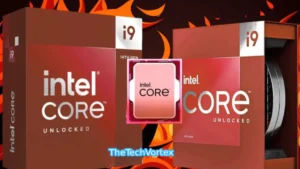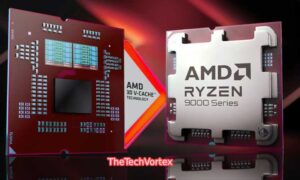AMD is gearing up to release two exciting gaming technologies, AMD FSR 3 and HYPR-RX, both of which promise to enhance gaming performance and cater to a wide range of hardware, including both Radeon and NVIDIA GPUs.
AMD FSR 3: Boosting Performance with AFMF
AMD’s FSR 3, part of the FidelityFX Super Resolution ecosystem, builds on the success of previous FSR versions. The notable addition is the Fluid Motion Frames (AFMF) technology, which combines frame interpolation and frame generation techniques. This results in a substantial performance boost, even exceeding 2x in certain scenarios. The technology is comparable to NVIDIA’s DLSS 3, incorporating advanced optical flow and temporal game data. FSR 3 features various modes: Native (high-quality AA/sharpening at native resolution), Quality (best image quality with upscaling), Balanced (balanced quality and performance with upscaling), and Performance (best performance with upscaling).
The advancements over FSR 2 include UI processing integration into the algorithm, ensuring artifact-free UI. FSR 3’s code is written in HLSL, enabling faster 4K frame generation than competing upscaling technologies. The asynchronous compute approach prevents the main game pipeline from being burdened by frame generation. To tackle latency spikes, AMD introduces Radeon Anti-Lag+.
Supported Games and Hardware
AMD FSR 3 support is set to be integrated into several AAA titles, including Forspoken and Immortals of Aveum. Notable partner studios and engines, such as Ubisoft and Unreal Engine 5, are collaborating with AMD to adopt FSR 3. In terms of hardware, FSR 3 covers a wide range, extending its compatibility to Radeon RX 500 GPUs and NVIDIA RTX 10 GPUs or higher for the vanilla version. The Frame Generation feature, however, requires Radeon RX 5000 GPUs and NVIDIA RTX 30 GPUs or higher.

AMD HYPR-RX: A Performance Boosting Suite
The HYPR-RX technology, part of the AMD Software: Adrenalin drivers, is a one-switch toggle solution that boosts performance in DX12 and DX11 games. It comprises three key features: Radeon Boost, Radeon Anti-Lag+, and Radeon Super Resolution (RSR). While RSR offers slightly lower image quality compared to FSR 3, it provides a substantial performance boost, sometimes quadrupling the native resolution. Notably, HYPR-RX incorporates AMD Fluid Motion Frames technology for the most significant performance boost, with frame generation effectively doubling the frame rate. Latency is kept in check with Anti-Lag+.
Hardware and Launch Information
HYPR-RX’s features are supported on AMD’s RDNA 3 GPUs, including the Radeon RX 7000 series. However, it is not compatible with NVIDIA or Intel GPUs. The technology is set to launch on September 6th, with AFMF support coming in Q1 2024.

Impressive Performance Gains and Early Impressions
AMD showcased the performance improvements brought about by FSR 3 and HYPR-RX through various game demos. For instance, FSR 3 achieved a remarkable 3.4x performance increase in Forspoken and a 65% performance uplift with the FSR 3 Native AA mode. HYPR-RX demonstrated an impressive 2.4x performance gain in Lies of P. Early impressions from gaming enthusiasts at Gamescom are positive, with comparisons to DLSS 3 and excitement about the boost these technologies bring to older GPUs.

Final Thoughts and Future Prospects
The gaming community eagerly anticipates the release of AMD FSR 3 and HYPR-RX, both of which promise to bridge the gap between hardware capabilities and gaming performance. These technologies not only cater to the latest GPUs but also breathe new life into older ones, making them capable of delivering smoother gameplay and improved visuals.
AMD’s commitment to providing a comprehensive ecosystem of technologies, from FSR to HYPR-RX, showcases their dedication to enhancing the gaming experience for a wide range of users. The impressive performance gains demonstrated in various game demos have generated excitement and positive anticipation within the gaming community.
As FSR 3 and HYPR-RX become available to gamers, it will be interesting to see how they are adopted across different gaming titles and platforms. With collaborations with prominent game studios and engines, these technologies are likely to become integral components of the gaming landscape, catering to both high-end and more budget-friendly hardware.
In the rapidly evolving world of gaming technology, AMD’s FSR 3 and HYPR-RX mark another significant step towards providing gamers with immersive and high-performance experiences. The potential for increased adoption and compatibility, along with ongoing updates and improvements, solidify these technologies as key players in the gaming industry’s future. Gamers from all camps, whether they own Radeon, NVIDIA, or Intel GPUs, can look forward to a win-win situation with these advancements.




[…] The latest information comes from well-known hardware leaker Hoang Anh Phu, who suggests that the AMD Radeon RX 6750 GRE will share the same specifications as the RX 6700 10 GB variant, albeit with slight […]